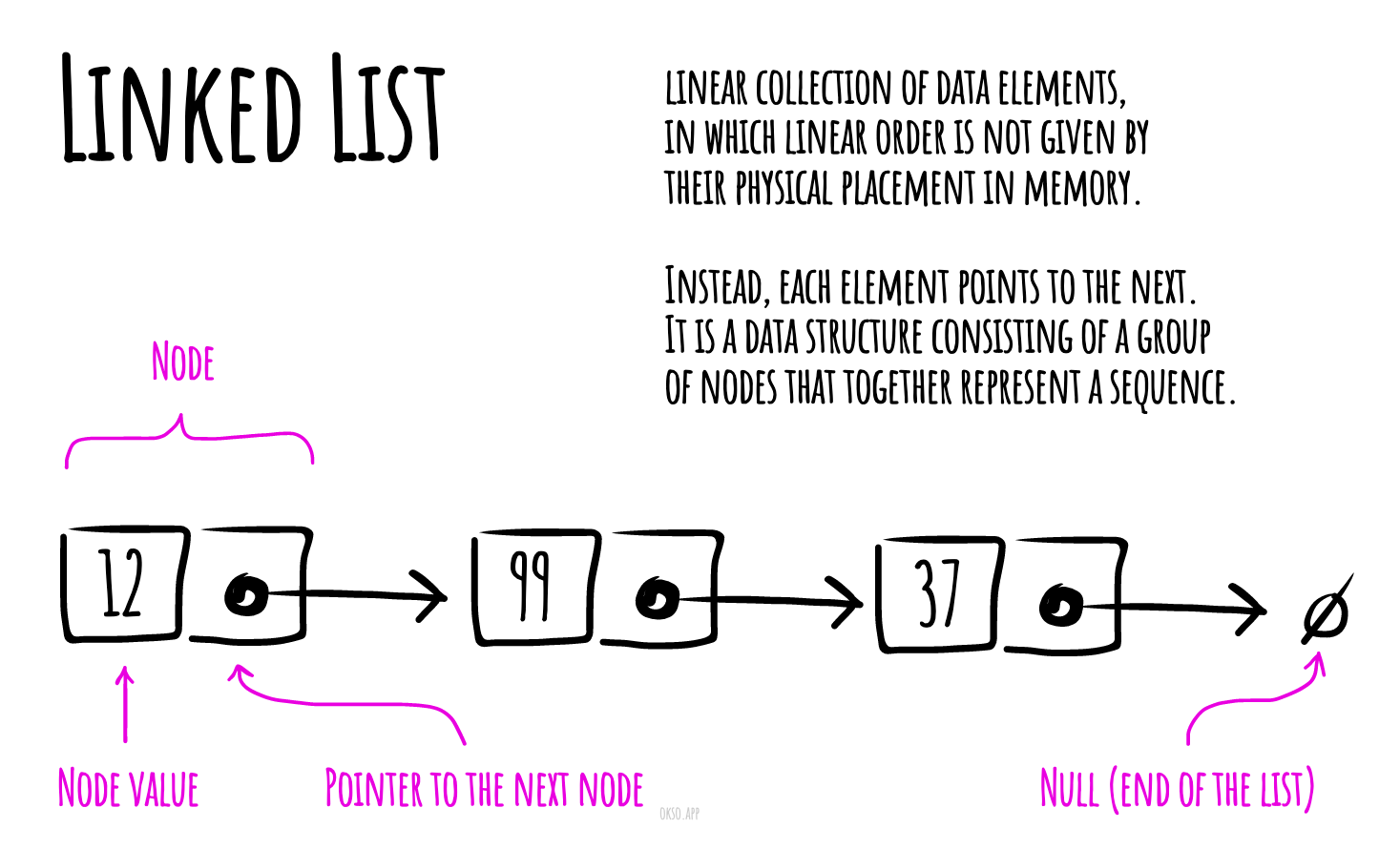链表
大约 3 分钟
链表
在计算机科学中,链表是一种数据结构,用于存储和组织元素的集合。与数组不同,链表中的元素不是按照它们在内存中的物理位置顺序存储的。相反,每个元素都包含一个指向下一个元素的引用。链表由一系列节点组成,这些节点一起表示一个序列。
链表最简单的形式是每个节点包含数据和指向下一个节点的引用。这种结构允许在迭代过程中高效地在任何位置插入或删除元素。
更复杂的链表变体添加了额外的链接,允许高效地插入或删除任意元素的引用。链表的一个缺点是访问元素的时间复杂度是线性的(难以进行快速随机访问),而数组具有更好的缓存局部性。
链表的实现通常涉及两个主要的类:LinkedListNode(链表节点)和LinkedList(链表)。

链表节点(LinkedListNode)
链表节点表示链表中的一个元素,它包含一个值和一个指向下一个节点的引用。它的实现可以参考下面的代码:
class Node { constructor(value) { this.value = value; this.next = null; } } 链表(LinkedList)
链表是由一系列链表节点组成的数据结构。它具有一个头节点(head)和一个尾节点(tail),分别表示链表的开头和结尾。
链表类提供了一系列方法来操作链表,如在开头插入节点(prepend)、在末尾插入节点(append)、在指定位置插入节点(insert)、删除节点(delete)、查找节点(find)等。以下是链表类的实现代码:
class LinkedList { constructor() { this.head = null; this.tail = null; this.length = 0; } // 在链表尾部添加新节点 append(value) { const newNode = new Node(value); if (!this.head) { this.head = newNode; this.tail = newNode; } else { this.tail.next = newNode; this.tail = newNode; } this.length++; } // 在链表指定位置插入新节点 insertAt(value, index) { if (index < 0 || index > this.length) { throw new Error("Index out of range"); } const newNode = new Node(value); if (index === 0) { newNode.next = this.head; this.head = newNode; if (!this.tail) { this.tail = newNode; } } else if (index === this.length) { this.tail.next = newNode; this.tail = newNode; } else { let currentNode = this.head; let prevNode = null; let currentIndex = 0; while (currentIndex < index) { prevNode = currentNode; currentNode = currentNode.next; currentIndex++; } prevNode.next = newNode; newNode.next = currentNode; } this.length++; } // 获取指定位置节点的值 getAt(index) { if (index < 0 || index >= this.length) { throw new Error("Index out of range"); } let currentNode = this.head; let currentIndex = 0; while (currentIndex < index) { currentNode = currentNode.next; currentIndex++; } return currentNode.value; } // 删除指定位置的节点 removeAt(index) { if (index < 0 || index >= this.length) { throw new Error("Index out of range"); } let currentNode = this.head; let prevNode = null; let currentIndex = 0; if (index === 0) { this.head = currentNode.next; if (this.length === 1) { this.tail = null; } } else if (index === this.length - 1) { while (currentIndex < index) { prevNode = currentNode; currentNode = currentNode.next; currentIndex++; } prevNode.next = null; this.tail = prevNode; } else { while (currentIndex < index) { prevNode = currentNode; currentNode = currentNode.next; currentIndex++; } prevNode.next = currentNode.next; } this.length--; } // 遍历链表并将节点值以数组形式返回 toArray() { const result = []; let currentNode = this.head; while (currentNode) { result.push(currentNode.value); currentNode = currentNode.next; } return result; } } const linkedList = new LinkedList(); linkedList.append(10); linkedList.append(20); linkedList.insertAt(15, 1); linkedList.removeAt(0); console.log(linkedList.toArray()); // 输出: [15, 20] 复杂度
链表的时间复杂度如下:
- 访问:O(n)
- 搜索:O(n)
- 插入:O(1)
- 删除:O(1)
链表的空间复杂度为O(n),其中n是链表中的节点数。

